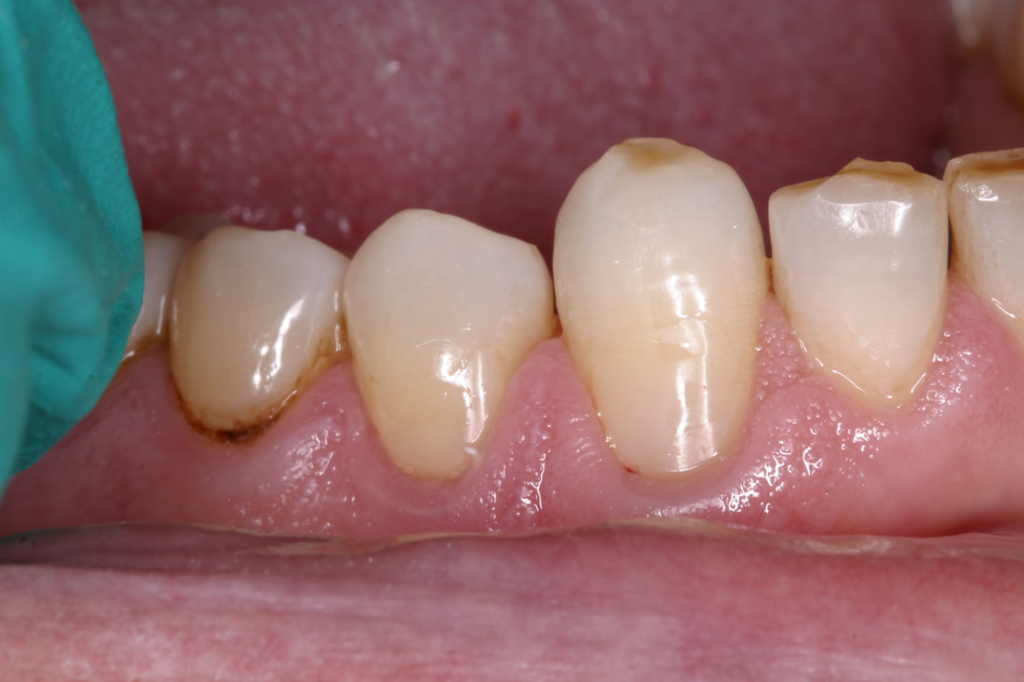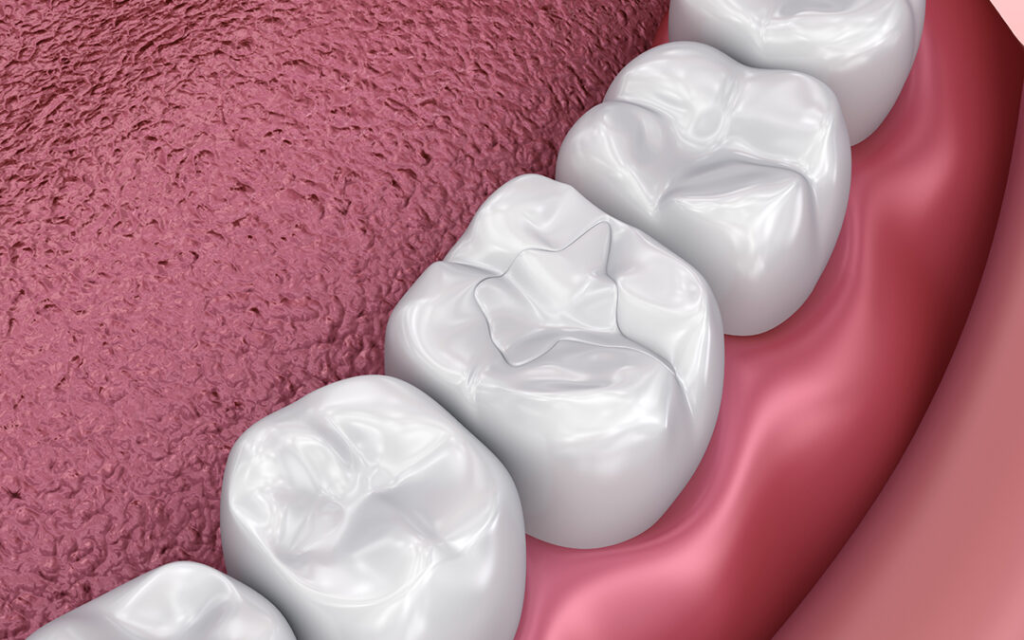If you’re reading this, it’s likely that you’ve heard the term “composite filling” mentioned during your most recent dental appointment, or perhaps you’re just inquiring about your available dental treatments.
Composite fillings are one of the best examples of how far dental technology has progressed. Imagine having a cavity filled with a material that is exceptionally durable and blends in perfectly with your natural tooth. It sounds good, doesn’t it? We’ll go into great detail about composite fillings in this article, including what they are, why many patients find them to be a great option, and what to expect if you require one.
Definition of Composite Fillings
Composite fillings are another name for tooth-colored fillings. The type of dental repair needed for a tooth with decay, fractures, or cracks is a composite filling. Here, “composite” refers to a substance that is composed; the ingredients are fine glass particles and plastic. Because composite fillings are tooth-colored, they are a popular option for those who wish to keep their smile looking natural.

Composite Filling Components
Composite filling components make them amazing pieces of craftsmanship. Silica and other fine glass particles are combined with resin to form the materials, ingredients, or components.
Whereas the glass provides strength and stiffness, the resin provides flexibility and bonds to the tooth structure. To generate a filling that can be formed to fit the cavity and fulfill both a form-fitting and functional purpose, they are simply mixed together.
Here’s a closer look at the key components:
- Resin: A type of plastic that forms the base of the composite material. It is highly adhesive, allowing the filling to bond securely to the tooth.
- Silica: These fine glass particles are incorporated to enhance the strength and wear resistance of the filling. They also contribute to the material’s translucency, mimicking the natural appearance of tooth enamel.
Types of Fillings Available
Dental fillings are used to repair teeth that have been compromised by injury or decay. Patients can choose from a variety of these types of materials accessible today. Every kind has unique advantages and characteristics. Making the proper filing decision can have a significant impact on the restoration’s usability and longevity as well as its final aesthetic appearance.
Composite Fillings
Because composite fillings seamlessly match the natural color of the teeth, patients are able to smile with confidence thanks to these appealing fillings. They can also be used in the majority of cavity sizes and regions. Fitting the composite fillings is typically a fairly easy procedure that takes only one appointment to complete. When compared to other filling types, composite fillings require less tooth material to be removed, allowing dentists to keep a greater and greater amount of the natural tooth.
- Material: Resin and finely ground glass particles (silica).
- Main Features:
- Tooth-colored, blends with natural teeth.
- Bonds well to tooth structure.
- Suitable for various types of cavities.
- Requires minimal removal of tooth structure.
Amalgam Fillings
Since more than a century ago, amalgam fillings have been a staple in dentistry due to their strength and longevity. In molars and premolars, where chewing pressures are greatest, they are frequently utilised. They are nonetheless a dependable and reasonably priced alternative in spite of their shiny appearance. However, concerns about the mercury content and the noticeable color have led to a decline in their popularity, especially for visible teeth.
- Material: Mixture of metals including silver, mercury, tin, and copper.
- Main Features:
- Strong and durable.
- Long history of use.
- Less expensive.
- Noticeable metallic color.
Gold Fillings
Gold fillings are considered one of the most durable types of dental restorations. They are highly resistant to corrosion and can last for many years, making them a long-term investment in dental health. However, the high cost and the need for multiple dental visits for placement make them less common. Additionally, their distinctive gold color makes them easily noticeable.
- Material: Gold alloy.
- Main Features:
- Extremely durable and long-lasting.
- Highly resistant to corrosion.
- High cost.
- Noticeable gold color.
Ceramic Fillings
Porcelain fillings, another name for ceramic fillings, are very well-liked for their long-lasting beauty. Because they can be made to match the colour of the teeth, they are a great option for individuals who want a natural appearance. Ceramic fillings are a sturdy alternative because they are stain- and wear-resistant. In contrast to composite fillings, they usually cost more and need a complicated implantation procedure.
- Material: Porcelain.
- Main Features:
- Excellent aesthetic qualities.
- Tooth-colored.
- Highly resistant to staining and wear.
- More expensive.
Comparison of Composite Fillings with Other Types of Fillings
Composite fillings offer a great balance between aesthetics and functionality. They are less noticeable than amalgam or gold fillings and provide a natural look that blends seamlessly with your teeth. While they may not be as long-lasting as gold or ceramic fillings, their ability to bond with the tooth structure and their versatility make them an excellent choice for many patients.
| Types of Filling | Material | Advantages | Disadvantages |
| Composite Fillings | Resin and glass particles | Tooth-colored, bonds well, versatile, minimal tooth removal | May wear down over time, shorter lifespan compared to gold or ceramic |
| Amalgam Fillings | Metals (silver, mercury, tin, copper) | Strong, durable, less expensive | Metallic appearance, mercury content concerns, potential allergies |
| Gold Fillings | Gold alloy | Extremely durable, resistant to corrosion | High cost, noticeable gold color, complex placement |
| Ceramic Fillings | Porcelain | Excellent aesthetics, tooth-colored, resistant to staining and wear, durable | Expensive, complex placement process |

How Are Composite Fillings Placed?
Composite fillings are typically placed in a single dental appointment. Here’s a detailed step-by-step process of how they are done:
- Your dentist will first numb the area around the tooth to be treated using a local anesthetic. This ensures that you do not feel any pain during the procedure.
- Once the area is numb, the dentist will use a dental drill or laser to remove the decayed portion of the tooth. The dentist will also remove any old filling material if necessary.
- After removing the decay, the dentist will thoroughly clean the cavity to remove any debris, bacteria, or remaining decay.
- The space is carefully prepared to ensure that the filling will adhere properly. This may involve etching the tooth with a mild acid to create a rough surface for better bonding.
- If the decay was extensive and close to the nerve of the tooth, a special medication may be applied to protect the nerve. This helps prevent future sensitivity and pain.
- The composite material is applied in layers. Each layer is carefully placed and shaped to fit the cavity.
- A special curing light is used to harden each layer of the composite. This process is repeated until the cavity is completely filled.
- Once the filling is in place, the dentist will shape it to match the contours of your natural tooth.
- The filling is then polished to ensure a smooth and comfortable finish, restoring the tooth to its original shape and function.
Aftercare of Composite Fillings
Proper filling care will enhance the longevity of the fillings and contribute to one’s general health. Here are a few compressive tips:
- Don’t eat hard and sticky food because it might damage your filling.
- Practice good oral hygiene care like flossing to prevent the building of plaque.
- If you have a habit of chewing nails, pens, or anything hard then you have to drop this habit after getting the procedure.
- Visit your doctor regularly to ensure the longevity of your filling.
- Avoid brushing your teeth too hard as it can damage your filling.
Conclusion
Among the more advanced dental procedures that give us the best of both worlds are composite fillings. Those patients who are familiar with the benefits, how the procedure is performed, and aftercare for the procedure might be able to make conscientious decisions about their dental health and still have a gorgeous, natural-looking smile that is healthy and strong.
